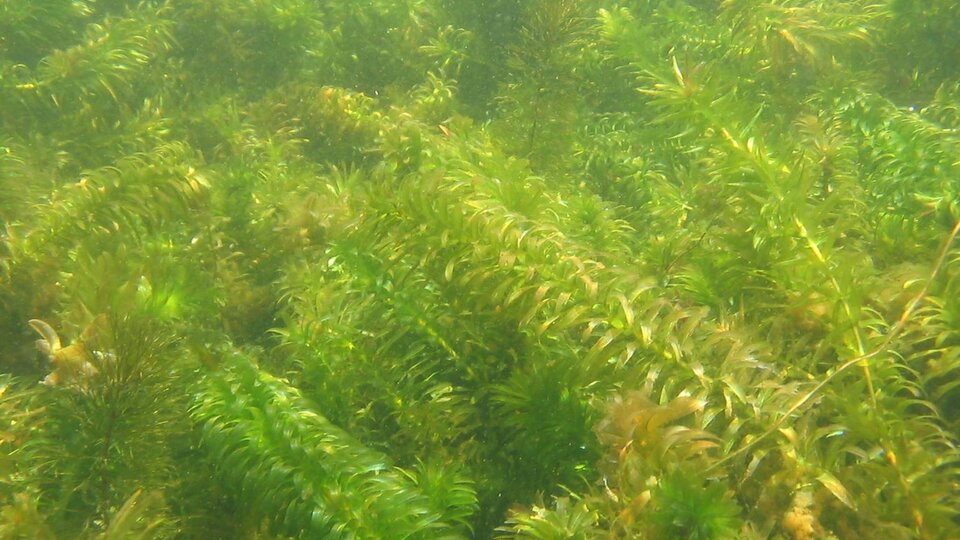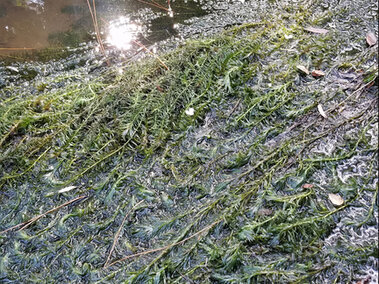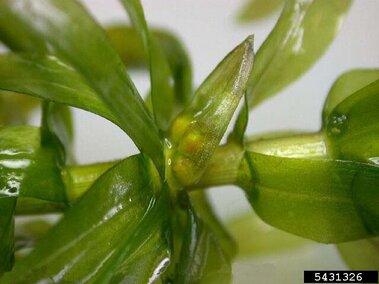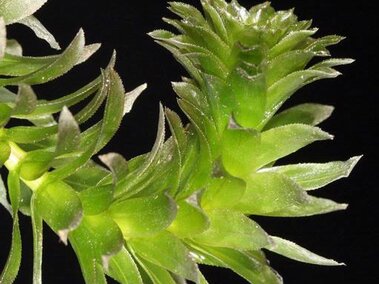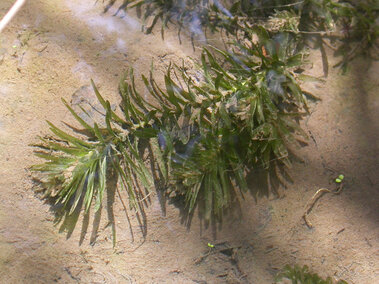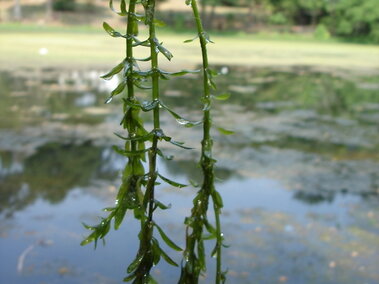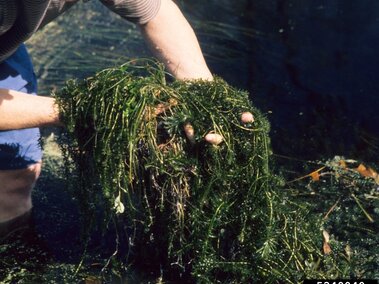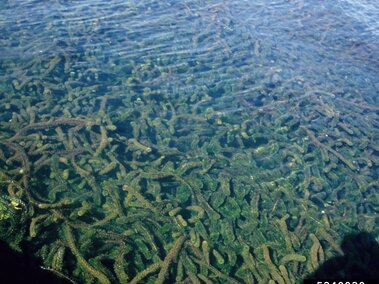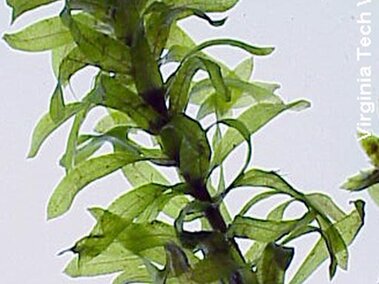General Information
Species Name: Egeria densa
Also Known As: anacharis, Brazilian elodea, dense waterweed, elodea, leafy elodea
Family: Hydrocharitaceae (Tape Grass)
Growth Form: Forb (submersed aquatic)
Life Span: Perennial
Flowering Dates: July-October
Origin: South America
Toxic: No
Category 1: Priority Aquatic Invasive Species
Why Is It Invasive?
Brazilian waterweed cause recreational, economic and ecological damage that can change how residents and visitors use and enjoy Nebraska waters. The long stems from a single rooted plant commonly form a canopy near the water surface that can cover an area of six feet or more. Dense mats reduce recreational opportunities, like fishing and swimming, and crowd out native fish and plant species. They also alter hydrology – plants release oxygen during the day; however, plants respire (take up oxygen) at night and cause the lowest oxygen levels to occur in the early morning. Fish kills can occur if plant density is high enough and dissolved oxygen levels become depleted overnight due to plant respiration.
What Does It Look Like?
General Characteristics
Brazilian elodea is a submersed aquatic plant that can be rooted or free floating. This green plant has a bottle-brush appearance and can grow nine to 15 feet tall. Upon reaching the surface of the water, the leafy branches create dense mats.
Flowers
Flowers are small, about one inch wide, and white with three petals. They grow on short stalks above the water, and bloom in spring and summer.
Leaves
Leaves are approximately one inch long and a quarter-inch wide. They’re arranged in whorls (multiple leaves radiating from a single node) of four to six around the stem and have very small “toothed” or serrated edges that require a magnifying glass to see. It as a smooth midrib on the underside of the leaf.
Stems
Stems will grow until they reach the surface of the water, up to 15 feet tall.
Seeds
Outside of its native habitat, Brazilian waterweed only reproduces vegetatively. Special double nodal regions can produce lateral buds, branches and roots. Only a double node can produce a new plant when it breaks off from the parent plant.
Photos
Where Does It Grow?
Brazilian waterweed grows almost entirety underwater in freshwater lakes, rivers, and streams. The plant lives in still and flowing waters up to 20 feet deep. It can inhabit waters with a wide range of temperatures, low CO2 levels, low light levels, and turbid environments.
How Does It Spread?
This plant was first introduced into the United States in the late 1800s as an aquarium plant and can still be found in some pet stores. Infestations are likely caused by people dumping aquariums into lakes and rivers.
How Do I Control It?
Management of invasive aquatic plants involving either mechanical removal of plants or application of herbicides to public waters requires a permit. Contact the Contact the Nebraska Game and Parks Commission for more information.
Mechanical
Cutting or pulling the plant by hand or with equipment such as rakes or cutting blades could break it into fragments, allowing it to further spread. Contact the Nebraska Game and Parks Commission to determine appropriate removal methods.
Cultural
CLEAN your watercraft, trailer, angling gear and other equipment. Remove all aquatic vegetation and animal species from your equipment.
DRAIN your watercraft at the ramp by removing the boat plug and draining all live wells and ballast tanks.
DRY your watercraft, trailer and other equipment for at least 7 days before visiting another waterbody.
DON'T LET IT LOOSE. Do not release or transport exotic or non-native fish species to new ecosystems, and do not dump aquariums. It is unlawful to release any aquatic species into a waterbody other than the one from which it was harvested. Doing so can promote the spread of AIS.
Chemical
Application of chemicals to public waters requires a permit. Contact the Contact the Nebraska Game and Parks Commission for more information.
What Should I Do If I See It in Nebraska?
If you see Brazilian waterweed in Nebraska, you should report it to the Nebraska Game and Parks Commission's Aquatic Invasive Species (AIS) Program using their AIS Report Form. For guidance on what information to include in your report, check out our reporting tips.
References and More Information
Center for Aquatic and Invasive Plants
Center for Invasive Species and Ecosystem Health
Minnesota Department of Natural Resources
Nebraska Game and Parks Commission
USGS Nonindigenous Aquatic Species
